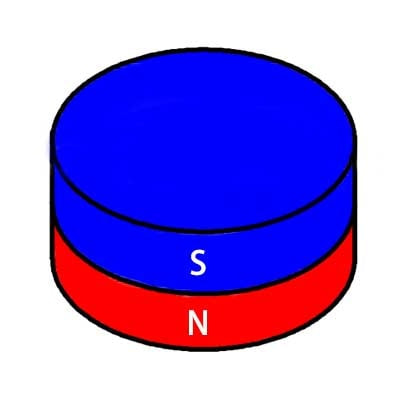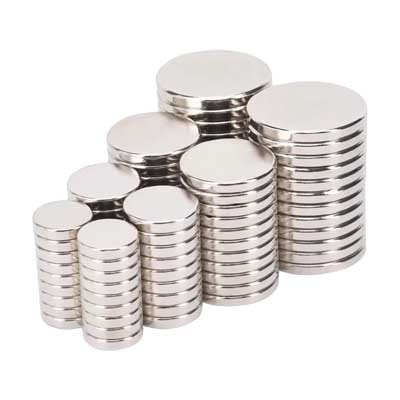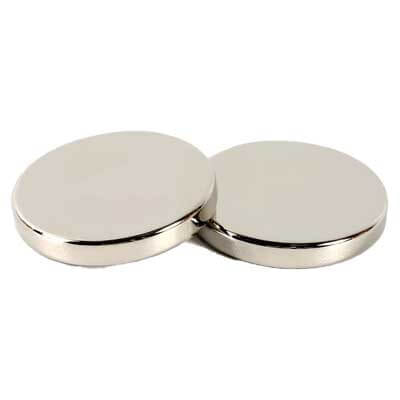Neodymium magnet (NdFeB), also known as rare-earth magnet, is the strongest type of permanent magnet available today. Made from a combination of neodymium, iron, and boron. It is not until the late 19th century, neodymium was successfully isolated by Carl Auer von Welsbach and then wildly used in modern technology since 1980s.
Primary Elements
Neodymium (Nd): A rare-earth metal that provides high magnetic strength.
Iron (Fe): Enhances magnetization and structural stability.
Boron (B): Improves coercivity (resistance to demagnetization).
Additives: Dysprosium (Dy) or praseodymium (Pr) may be added to improve high-temperature performance.
Primary Elements of an NdFeB Alloy
| Components of Neodymium Magnet | Percentage by weight |
| Neodymium (Nd) | 29% - 32% |
| Iron (Fe) | 64.2% – 68.5% |
| Boron (B) | 1.0% - 1.2% |
| Aluminium (Al) | 0.2% - 0.4% |
| Niobium (Nb) | 0.5% -1% |
| Dysprosium (Dy) | 0.8% -1.2% |
Neodymium magnet is ideal for applications requiring maximum magnetic strength in minimal space. Their balance of performance, cost, and adaptability makes them the first choice for industries pushing the boundaries of technology. Neodymium magnets are everywhere in our daily life, such as motors, refrigerators, high-end speakers in home appliances; smartphones and laptops of electronics; bookmarks, clasps, pushpins, and buttons in our daily supplies.
Key Advantages
Superior Strength: 5-10 times stronger than ordinary magnets.
Compact Size: Achieve high performance in small dimensions.
Cost-Effective: Better performance-to-price ratio compared to other rare-earth magnets.
Wide Applications: Used in wireless charging, motors, speakers, medical devices, and many others.
Comparison with Other Magnets
| Feature | Neodymium (NdFeB) | Ferrite | Alnico | Samarium Cobalt (SmCo) |
|---|---|---|---|---|
| Magnetic Strength | Extremely High | Low | Medium | High |
| Temperature Resistance | Up to 150°C* | Up to 250°C | Up to 550°C | Up to 350°C |
| Corrosion Resistance | Requires coating | Excellent | Good | Good |
| Cost | Medium | Low | High | Very High |
| Common Uses | Wireless charging, EVs, electronics | Refrigerator, speakers | Sensors, guitar pickups | Aerospace, military |
*Special grades can withstand higher temperatures up to 260°C.
For customized solutions (e.g., specific shapes, coatings, or grades), consult manufacturers to optimize magnet design for your application. Always prioritize safety and proper handling to leverage their full potential.




 Customized is available
Customized is available T/T or L/C accepted
T/T or L/C accepted EXW/FOB/CIF/DDU first
EXW/FOB/CIF/DDU first 24 hours customer services
24 hours customer services Offer free magnetic solution
Offer free magnetic solution Quality guaranteed
Quality guaranteed 3~20 days lead time
3~20 days lead time Free samples provided
Free samples provided 100% secured online ordering
100% secured online ordering



